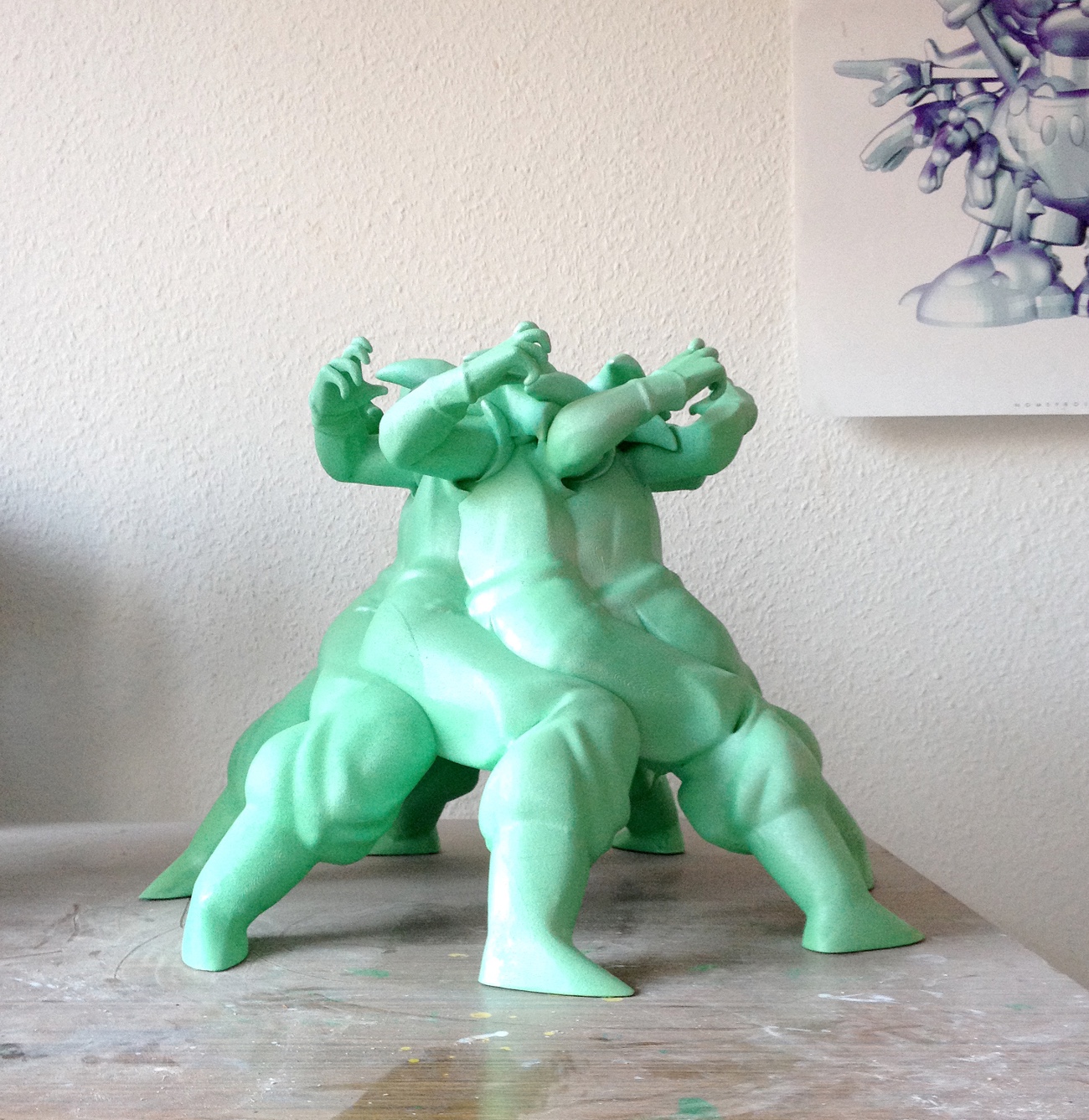
Matthew Plummer-Fernandez, Gogogogogoku, 2015
Matthew Plummer-Fernandez is probably one of the most interesting artists slash designers of the moment. When he’s not developing art critic bots that do as good a job as any art pro at inventing meaning out of abstract forms, he is looking for the presence of algorithms in culture, submitting the most copyright-protected characters of pop culture to elegant digital glitches, or writing an encryption software application that scrambles 3D objects and allows authorized users to repair them with a key.
Demonstrating once again its impeccable taste, NOME Project -a gallery which is working with artists interested in the intersection between art, politics, and technology- has recently invited Plummer-Fernandez to show his latest series of sculptures and prints in Berlin.
The four sculptures are derived from 3D models of popular cartoon characters that the artist found online and remixed in order to obtain a new version of these pop icons: Every Mickey, Merge Simpson, Gogogogogoku, and Spongebool are new forms of the popular cartoon characters.
The prints are generated by converting the 3D model into an image file, a process which also serves to conceal the original source. The 3D model’s geometry is mapped onto a color range, resulting in a colorful flat surface that represents the character. By creating different forms from the same code, Matthew Plummer-Fernandez questions the inner nature of an object, disputing the relationship between a genotype and a phenotype.
Hard Copy, Plummer-Fernandez solo show, opened a few days ago and i caught up with the artist to talk about his new works:
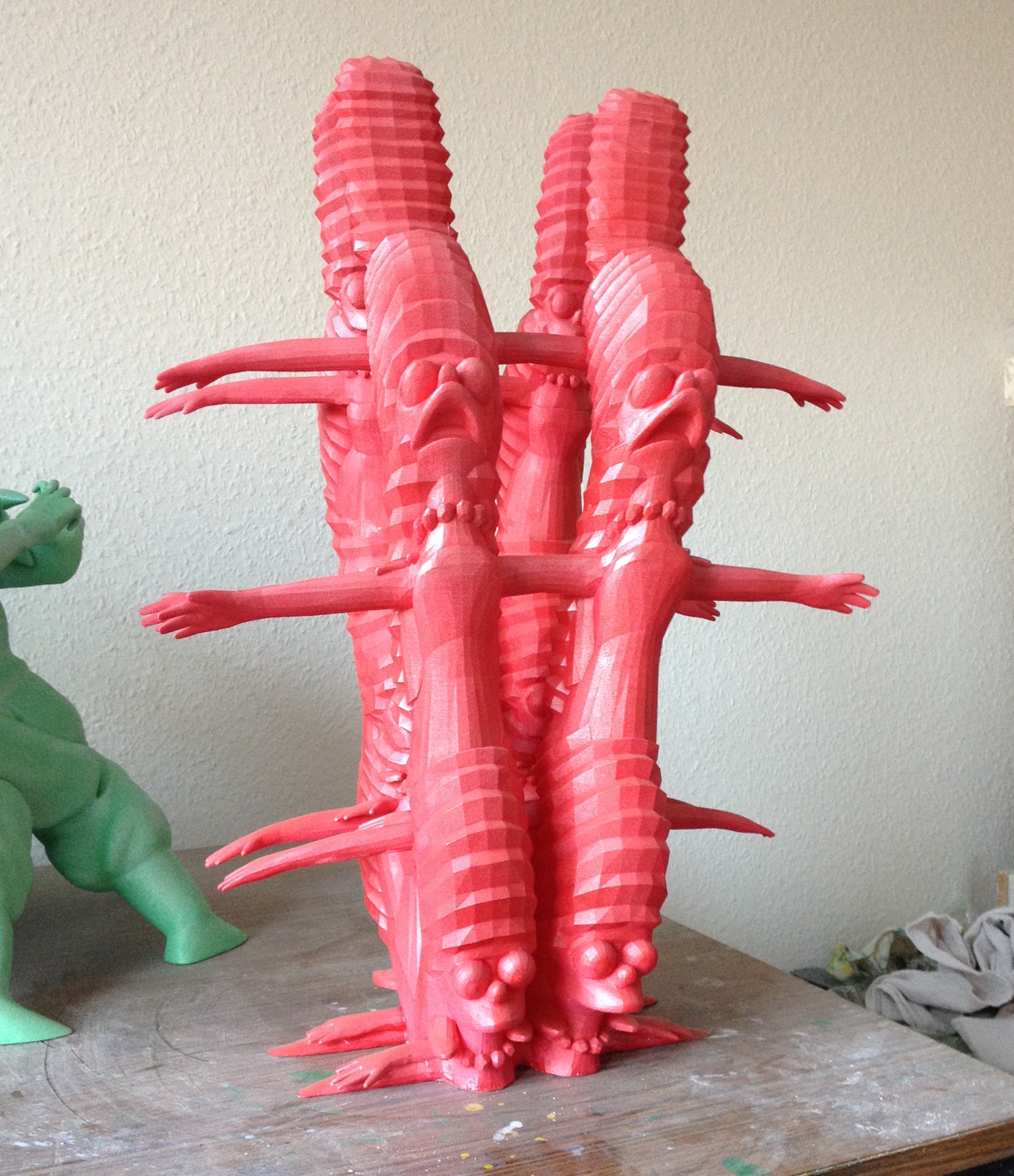
Matthew Plummer-Fernandez, Merge Simpson, 2015
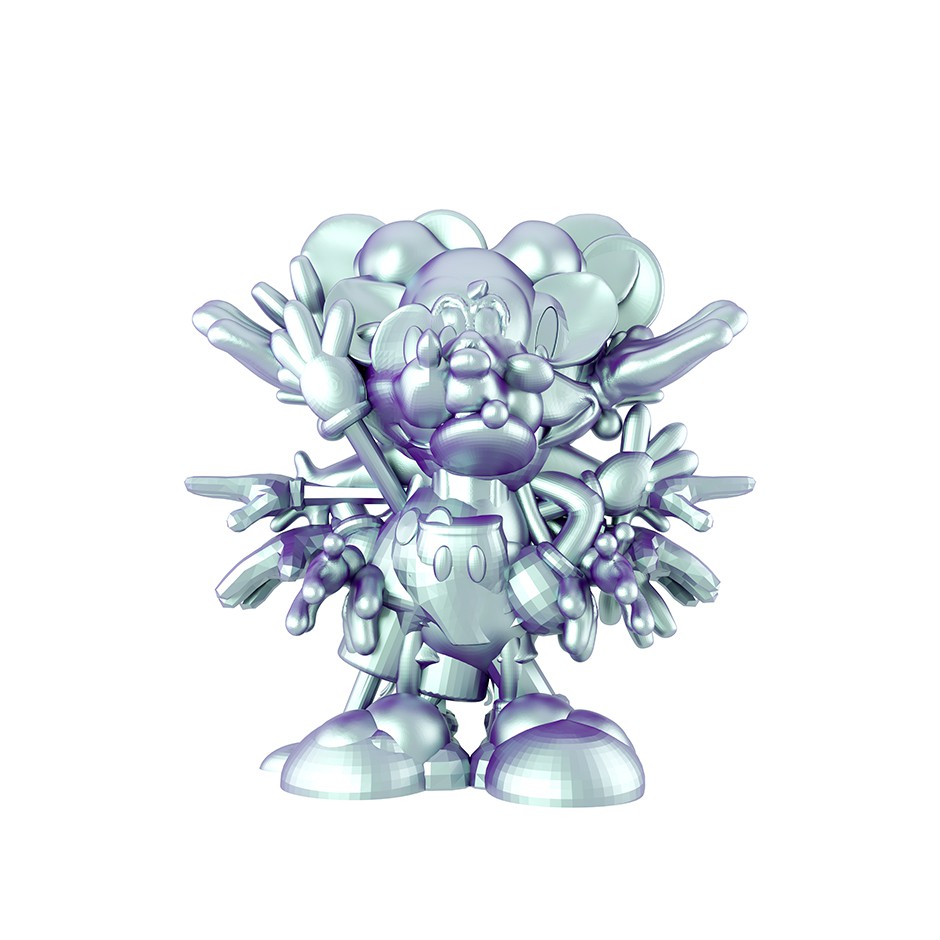
Matthew Plummer-Fernandez, Every Mickey, 2015
Hi Matthew! You’re showing five new sculptures at the NOME project gallery. Can you tell us about these works?
These new 3D prints are derivatives of four popular cartoon characters, Goku, SpongeBob, Marge Simpson and Mickey Mouse. They are made from 3D models found online for those characters. I’m using them as a means to explore what lies beyond the fan art created by followers of mainstream culture, what arcane icons can be created out of the language of popular icons once that loyalty is abandoned and the fidelity to the original is superseded by an irrational desire to create and worship something else.
The Mickey piece is called Every Mickey, it is every single model of mickey I could find conjoined as one, which makes it look a bit like the Hindu goddess Durga because of its many arms.
Goku became Gogogogogoku, a looping segment of goku in a fight pose, that seems to be endlessly fighting with itself, which I believe is about the folly of self-perpetuating conflict.
And so on.
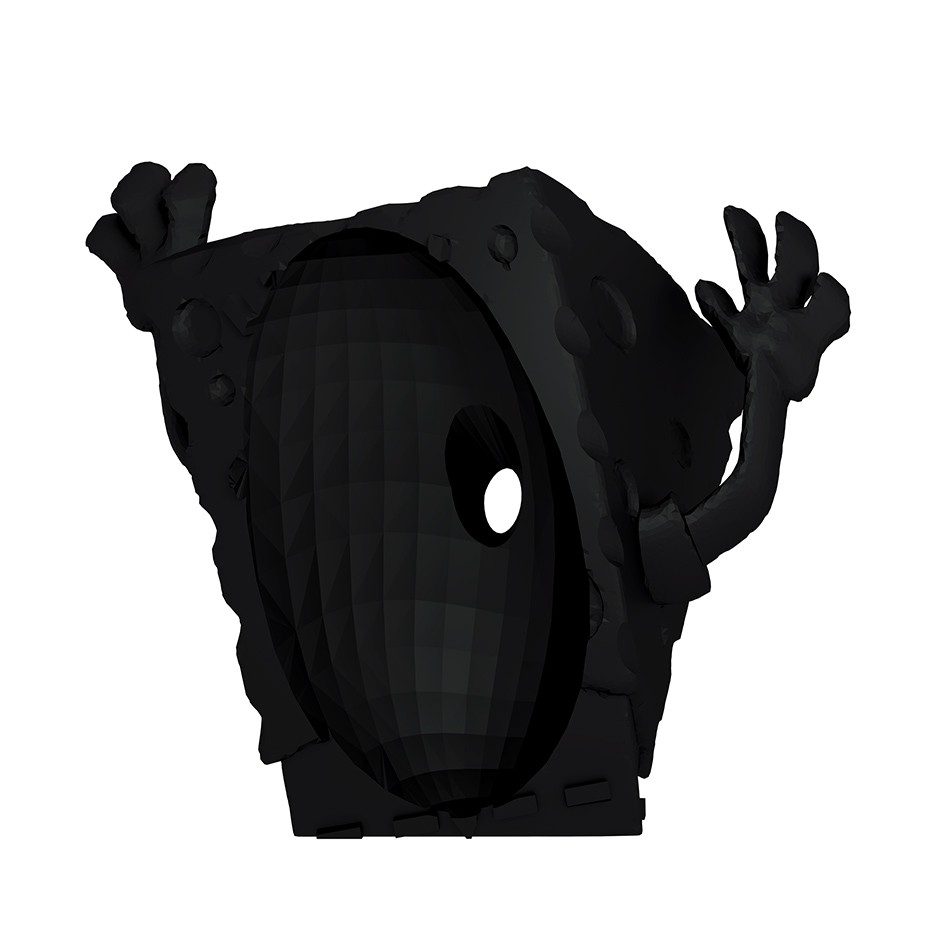
Matthew Plummer-Fernandez, SpongeBool, 2015
How different are they from the MPF sculptures we all know and like?
In previous sculptures I started with 3D scans, which used to be integral to my concept, but now I don’t really see the point of 3D scanning, what is more interesting is the proliferation of 3D models you can now find online, I find it fascinating, this cornucopia of shared folk art and design that is way beyond what I have at hand to 3D scan. It also taps into material cultures that are native to computers – the Marge model for instance is from a Simpsons game, which makes it look very different from a Marge toy.
I’m also using for the first time Boolean operations – the adding and subtracting of parts from each other. All the pieces have either some other model overlapped or subtracted from it.
The other new thing for me is the production process – printing the objects in white nylon and then having them airbrushed. This way I can work on a slighter larger scale as the nylon machine is bigger. Airbrushing was fun, a little too hands-on for my liking, but we did achieve some interesting effects with it. The physical production is usually irrelevant to the piece anyway; it is simply a means to make them physical and still faithful in appearance to the digital counterpart.
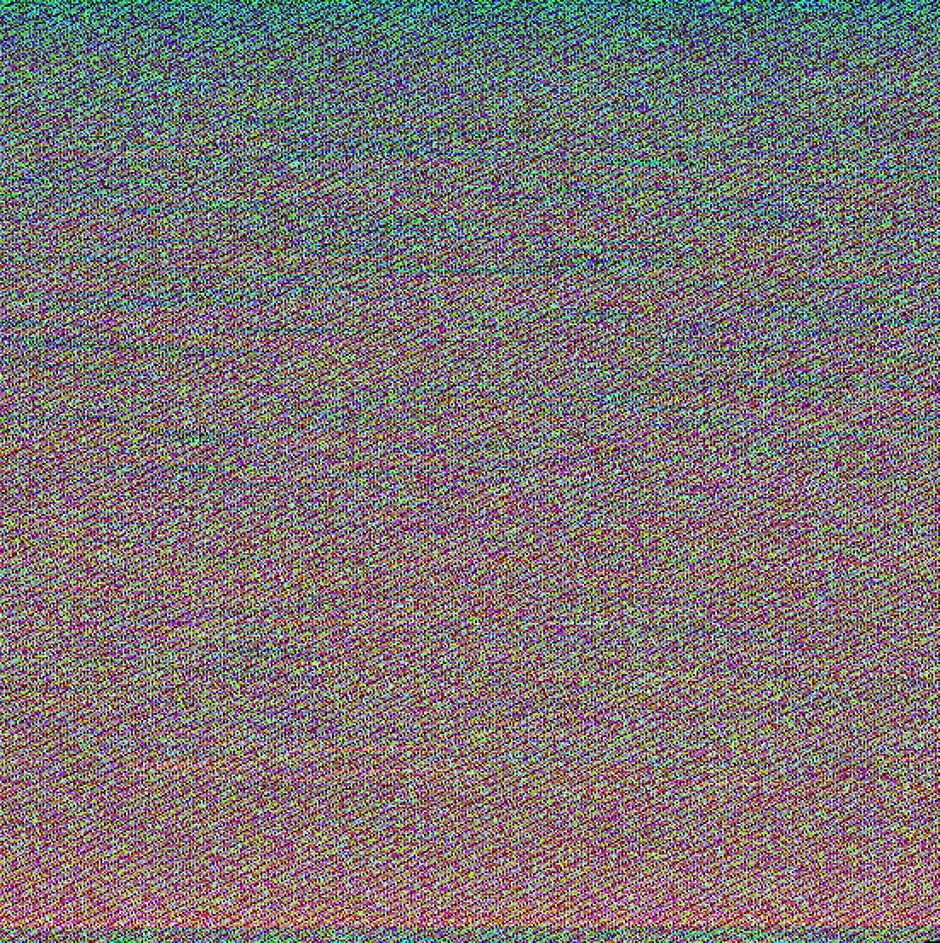
Matthew Plummer-Fernandez, Gogogogogoku.png (Ditone archival pigment print), 2015
You’ve been 3D printing sculptures for a few years now. Do you see an evolution in the way you approach the original objects and modify them? Conceptually or aesthetically?
I think before I was content with simply considering the process interesting, and having the subject matter of the piece entangled in that process – whether the process became a copyright circumvention strategy, or a comment on Google automation. Now that I’m more familiar with the processes and find them very simple to execute, I’m looking more closely at the final piece and asking myself if its more than just a 3D model that has undergone some interesting modifications, does the end result arrive at something interesting in itself? For that reason I now usually have a rough sketch of what I want to arrive at and work towards it, before my modelling was usually improvised and generative, arriving at the unexpected. I think both approaches are valid and I’m striving for a balance of the two.
The aesthetics are always evolving. I used to have triangular facets visible on my pieces, now I’m into quadrilateral meshes, and mixed resolutions. I think about aesthetics a lot, I’m not a purely formal kind of artist, but I love pushing aesthetics. There are some artist peers really pushing aesthetics – Adam Ferriss and Mitch Posada.
I would really like to see an artist or designer take one of your sculptures and submit it to a similar copy/modify/print exercise that characterises some of your works. Has it already happened? Would you welcome the gesture?
I would love that, I have some files on Thingiverse, but I’ve only had others print replicas of them, which is not very exciting. I should start a remix club with my peers. I’m starting collaboration next week with JODI and I can’t wait to see how they will stretch my practice.
Your work seems to indicate a certain fondness for imperfections. What makes imperfection and glitches fascinating? Are some glitches or imperfections more interesting than others? and why?
That’s an interesting question I often ask myself. I think on one hand it simply evolved out of my inability to do things neatly, at one point I simply decided to just embrace my error-prone approach and push it further. I also use it as a way of staying out of the trap of being techno-determinist. When everyone wanted the perfect 3D print to showcase the technology, I ventured in the other direction to highlight the grain inherent in the process.
Lately though I’ve been thinking more and more about what are the visual semantics of imperfections, especially applied to popular culture. I think it suggests a fracture in the clean image of pop, and perhaps that represents a breakdown in the wider socio-economic system, which seems like the right aesthetic for the times.
I’m afraid of fetishizing digital glitch aesthetics as they quickly become meaningless when used profusely and without context. I stay away from certain tropes like data-bending and pixel sorting. I think with 3D forms I need to find my own language of errors, which is not hard to find, almost any modelling tool command used naïvely can lead to some sort of mistake.
If Novice Art Blogger were to review this show, what do you think the bot would have to say about it?
I would love to find out but sadly Novice Art Blogger’s AI engine has been taken offline. I want to substitute it but I’m afraid it wouldn’t have the same voice. An upgrade to another AI would feel like an imposter had taken NABs place. Robots aren’t easily replaced after all.
With some of your work you are already ‘outsourcing’ some of the creative process to software. What will prevent creative people from becoming obsolete one day and having their job taken over by robots?
Creative work is infinitely varied; there will always be practitioners that adopt less automated approaches, like craftspeople that prefer hand tools to power tools. Obsolescence is optional. Also the practitioner that does embrace automation still has to create the rules and strategies that those automatons execute, so it’s more like moving your creativity into a meta-practice.
Thanks Matthew!
Hard Copy, Matthew Plummer-Fernandez‘s solo show is at the NOME project gallery until the 23rd of December 2015.
And just because this must be my favourite sculpture EVER, i’m going to close this post with:
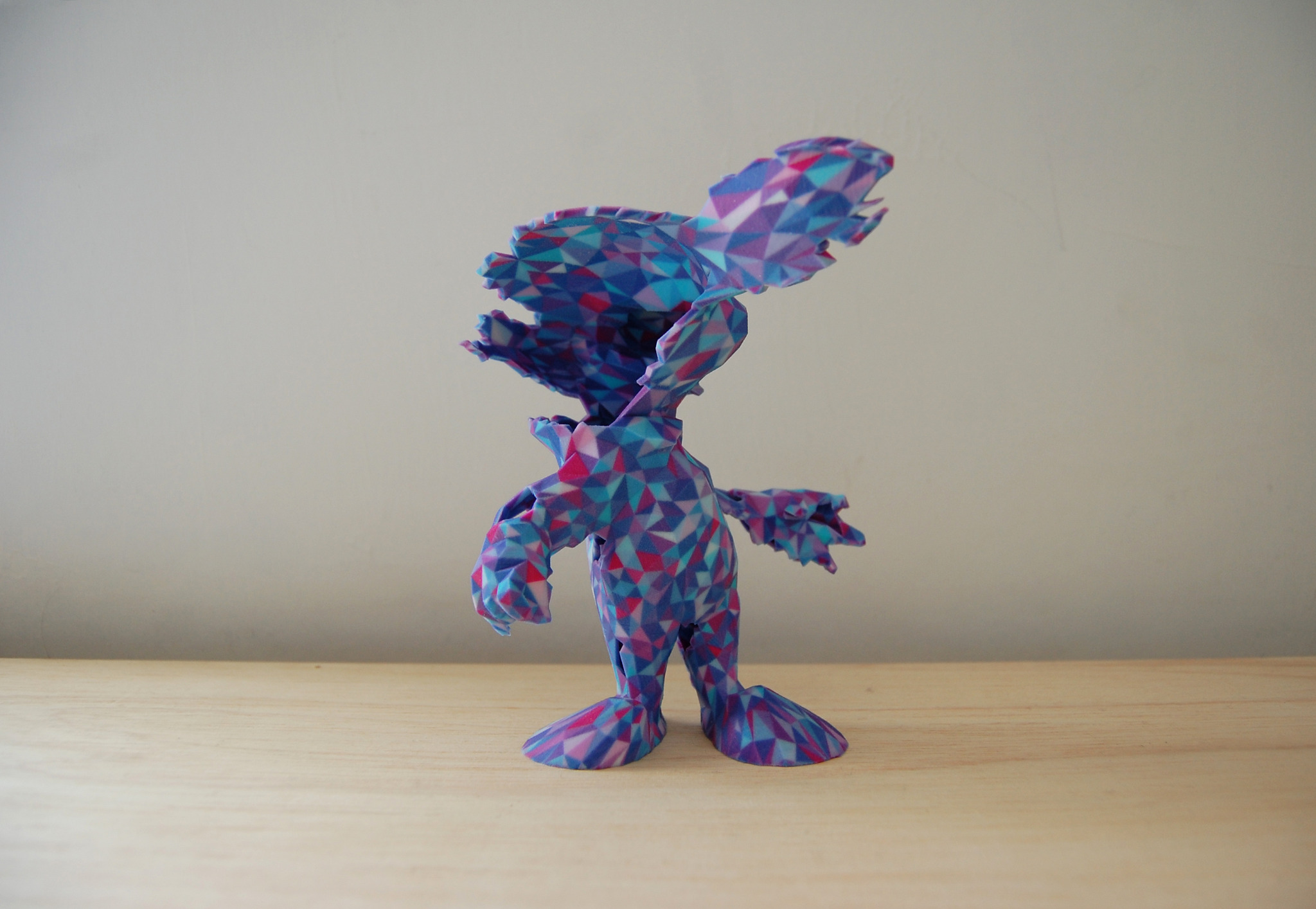
Matthew Plummer-Fernandez, sekuMoi Mecy, 2012
